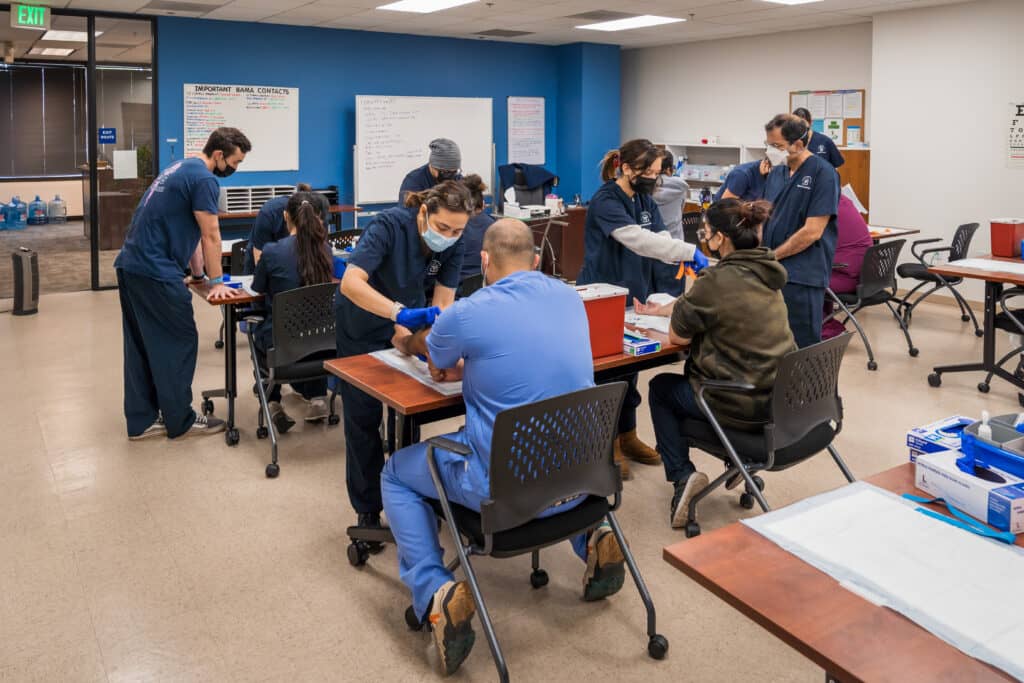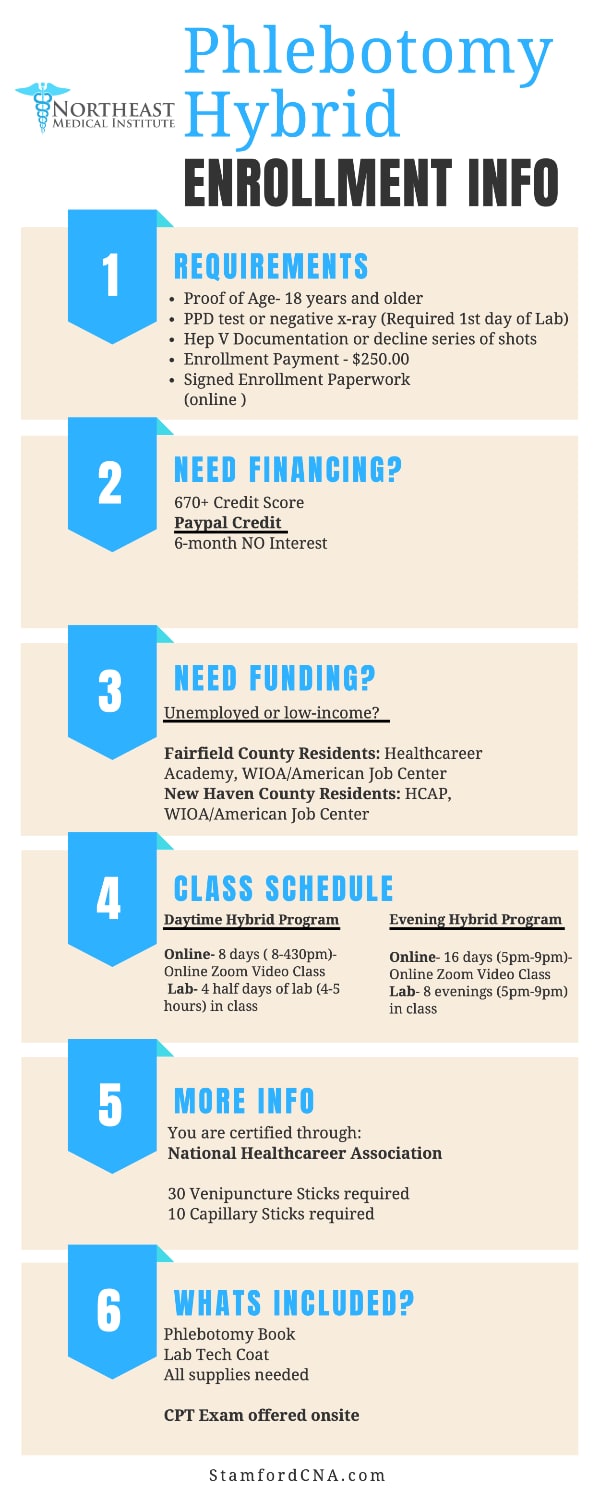Unknown Facts About Northeast Medical Institute - New Haven Campus Phlebotomy Course & Cna Class
Unknown Facts About Northeast Medical Institute - New Haven Campus Phlebotomy Course & Cna Class
Blog Article
How Northeast Medical Institute - New Haven Campus Phlebotomy Course & Cna Class can Save You Time, Stress, and Money.
Table of ContentsUnknown Facts About Northeast Medical Institute - New Haven Campus Phlebotomy Course & Cna ClassSee This Report about Northeast Medical Institute - New Haven Campus Phlebotomy Course & Cna ClassNortheast Medical Institute - New Haven Campus Phlebotomy Course & Cna Class Can Be Fun For Everyone3 Easy Facts About Northeast Medical Institute - New Haven Campus Phlebotomy Course & Cna Class ExplainedThe Basic Principles Of Northeast Medical Institute - New Haven Campus Phlebotomy Course & Cna Class An Unbiased View of Northeast Medical Institute - New Haven Campus Phlebotomy Course & Cna Class
The usage of such gadgets must be gone along with by other infection avoidance and control practices, and training in their use. Not all safety tools apply to phlebotomy. Before selecting a safety-engineered tool, customers need to extensively explore readily available tools to identify their suitable use, compatibility with existing phlebotomy practices, and efficiency in protecting team and individuals (12, 33).For setups with reduced resources, cost is a motoring consider procurement of safety-engineered devices - PCT Courses. Where safety-engineered tools are not offered, experienced use a needle and syringe is appropriate. Unintended exposure and specific information regarding an event must be taped in a register. Assistance solutions need to be advertised for those who undergo unintended exposure.
One of the crucial markers of quality of care in phlebotomy is the participation and collaboration of the patient; this is equally helpful to both the health and wellness employee and the client. Clear information either composed or verbal must be available to each client who goes through phlebotomy. Annex F supplies sample text for explaining the blood-sampling treatment to an individual. labelling); transport problems; analysis of results for professional monitoring. In an outpatient division or facility, give a dedicated phlebotomy cubicle containing: a clean surface with two chairs (one for the phlebotomist and the other for the client); a hand laundry basin with soap, running water and paper towels; alcohol hand rub. In the blood-sampling space for an outpatient department or clinic, provide a comfortable reclining sofa with an arm remainder.
Northeast Medical Institute - New Haven Campus Phlebotomy Course & Cna Class Things To Know Before You Get This
Make certain that the indications for blood tasting are plainly defined, either in a composed method or in recorded instructions (e.g. in a laboratory kind). Accumulate all the tools needed for the procedure and area it within safe and simple reach on a tray or trolley, making sure that all the things are clearly visible.
Introduce yourself to the client, and ask the client to specify their complete name. Inspect that the lab type matches the individual's identity (i.e. match the client's details with the lab form, to guarantee precise identification).
Make the client comfy in a supine placement (if feasible). Location a clean paper or towel under the client's arm. Discuss the test to be carried out (see Annex F) and obtain spoken authorization. The person has a right to reject an examination any time before the CNA Training blood sampling, so it is very important to ensure that the person has actually comprehended the procedure.
7 Easy Facts About Northeast Medical Institute - New Haven Campus Phlebotomy Course & Cna Class Shown
Expand the individual's arm and examine the antecubital fossa or lower arm. Locate a capillary of an excellent dimension that is visible, straight and clear.
DO NOT insert the needle where veins are drawing away, because this increases the chance of a haematoma. The vein ought to show up without using the tourniquet. Situating the blood vessel will help in determining the right size of needle. Use the tourniquet about 45 finger sizes over the venepuncture site and re-examine the capillary.
Specimens from main lines lug a danger of contamination or wrong lab examination results. It is appropriate, but not excellent, to draw blood samplings when first presenting an in-dwelling venous tool, before connecting the cannula to the intravenous liquids.
The Main Principles Of Northeast Medical Institute - New Haven Campus Phlebotomy Course & Cna Class
Permit the location to completely dry. Failure to allow sufficient get in touch with time raises the threat of contamination. DO NOT touch the cleansed website; in certain, DO NOT place a finger over the vein to assist the shaft of the revealed needle. It the website is touched, repeat the sanitation. Do venepuncture as follows.
Ask the patient to develop a clenched fist so the blood vessels are extra prominent. Enter the vein swiftly at a 30 degree angle or less, and remain to present the needle along the vein at the easiest angle of entry - Phlebotomy Courses. As soon as enough blood has actually been gathered, release the tourniquet prior to taking out the needle
Getting The Northeast Medical Institute - New Haven Campus Phlebotomy Course & Cna Class To Work
Take out the needle gently and apply mild pressure to the website with a tidy gauze or completely dry cotton-wool sphere. Ask the individual to hold the gauze or cotton woollen in location, with the arm expanded and raised. Ask the individual NOT to bend the arm, since doing so creates a haematoma.

A Biased View of Northeast Medical Institute - New Haven Campus Phlebotomy Course & Cna Class
Where feasible, maintain the tubes in a shelf and move the rack towards you - https://visual.ly/users/gordonmarvin28/portfolio. If the example tube does not have a rubber stopper, inject incredibly slowly right into the tube as minimizing the stress and rate utilized to transfer the specimen decreases the danger of haemolysis.

Report this page